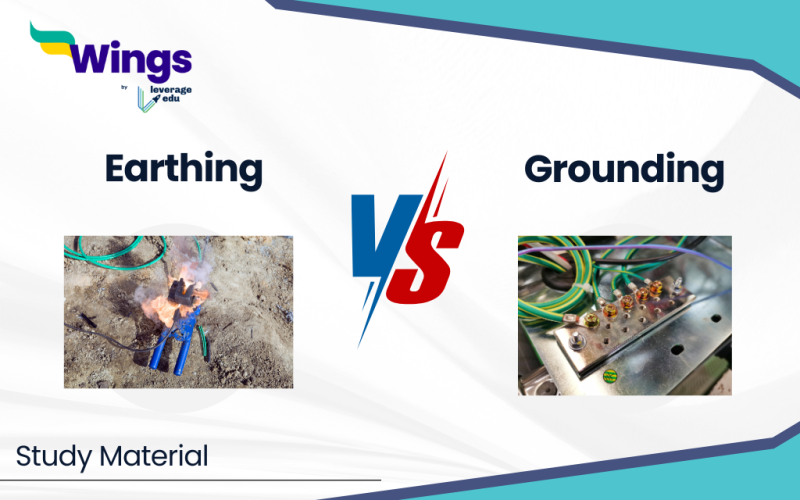The basic difference between earthing and grounding is that in earthing, the conductor through which the current is not flowing is connected with the ground, whereas in grounding, the conductor through which the current flows is connected with the ground. These are two very important aspects of the electrical system, as with electricity comes the word danger. Let us check what earthing and grounding mean and why they are important.
Table of Contents [show]
What is Earthing?
Earthing is a building protection system that connects all electrical installations to the earth, preventing faults that could harm people or property. To do this, conductive rods are driven into the ground close to the point where power enters the home. When handling combustible goods or electronically sensitive gadgets, a connection to the ground also prevents the accumulation of static electricity.
The goal of earthing is to reduce the possibility of receiving an electric shock when handling a defective electrical component. There are various reasons why electrical circuits needs to be connected to the ground.
What is Grounding?
In grounding, the circuit’s current-carrying portion is linked to the ground. The circuit’s neutral wire is connected to the ground, while the live wire is connected to the power source. Electric equipment is grounded so that there is no voltage differential between the gadget and the ground. It prevents malfunctions in equipment like transformers and generators. Phases fall out of balance during the fault, and the grounding allows for the passage of additional current.
Also Read: What is the Difference Between a Capacitor and a Condenser?
Difference between Earthing and Grounding
Below is the table mentioned where one can find the the detailed difference between earthing and grounding:
| Aspect | Earthing | Grounding |
| Definition | The Conductor is connected to the Earth’s surface | Electrical equipment is connected to the Earth |
| Purpose | Prevention from electrical faults and shock hazards | Providing a safe path for fault currents |
| Safety | Protects people and property from the current | Ensures stable equipment operation |
| Electrical | Fault current is channeled to the earth | Voltage fluctuations prevention |
| System | Is typically used in power distribution systems | Used in electrical systems and devices |
| Components | Ground electrodes, conductors, and connections | Ground wires, grounding bars, and bonding |
| Installation | Requires proper grounding techniques | Follows grounding standards and codes |
| Maintenance | Regular checks are required for corrosion and continuity | Periodic inspections and testing are required |
Application of Earthing and Grounding
The major applications of earthing and grounding are:
| Earthing | Grounding |
| Is used as a safety measure against electric shock | The Safety of appliances is something it is used for |
| Used when there is a requirement for electric discharge | It is used when there is some sort of electric imbalance due to some reason in the system |
| Protects from lighting | Used in reducing the frequency of faults. |
| Used in homes, motors, and generators | Used in power transformers and neutral motors |
Also Read: What is the Difference Between Regulated and Unregulated Power Supply?
FAQs
Yes, the wire used is black for grounding.
Earthing wire is green in colour.
It is not at all safe to touch the earthing wire.
RELATED POSTS
This was all about the “Difference between Earthing and Grounding”. For more such informative blogs, check out our Study Material Section, you can learn more about us by visiting our Indian exams page.
 One app for all your study abroad needs
One app for all your study abroad needs















 45,000+ students trusted us with their dreams. Take the first step today!
45,000+ students trusted us with their dreams. Take the first step today!
